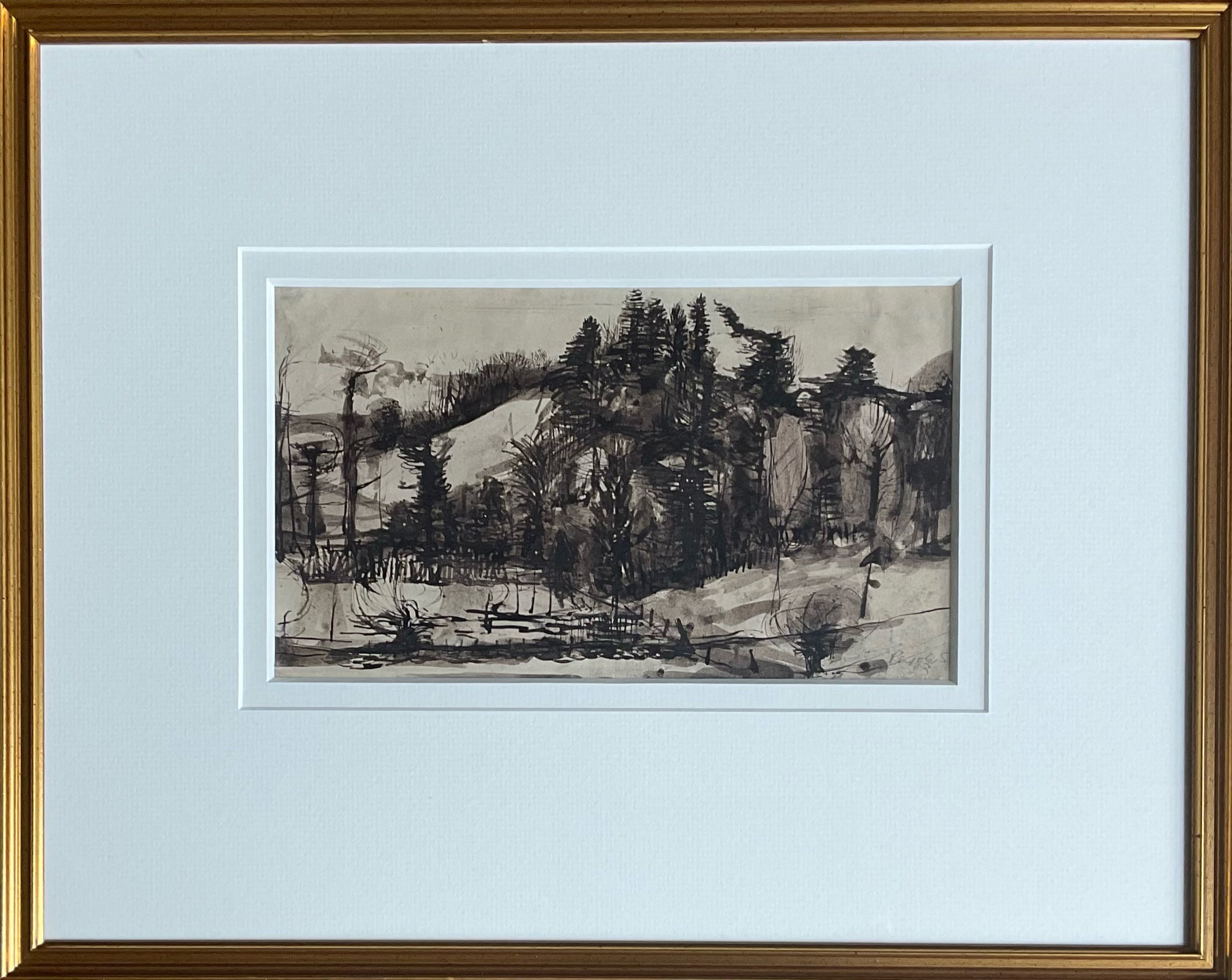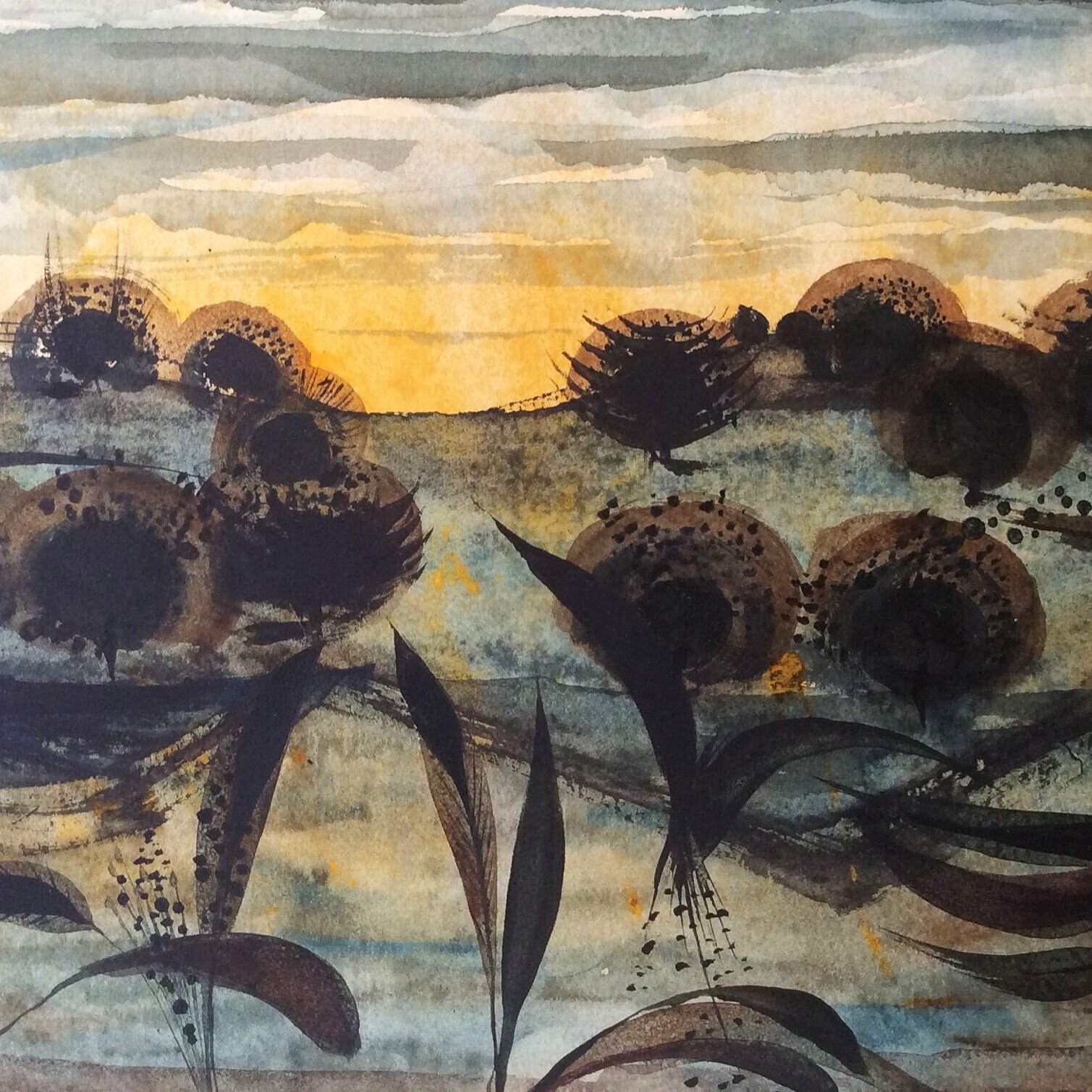ALAN REYNOLDS 1926-2014
Alan Reynolds work changed over his working life but it is his early abstracted landscapes that depict his home county of Suffolk and those painted in Shoreham and Kent that we particularly covert. In fact together with his great friend and fellow artist Frank Plummer, Reynolds set up a new artistic group called the Shoreham group .In March 1952, the unknown art student Alan Reynolds exhibited thirty-four paintings at the Redfern Gallery and he was the most significant English painter to emerge in the early 1950s.
By the mid 1950s, Reynolds was heralded as the saviour of English landscape painting. From the outset, Reynolds loved the art of Paul Klee; and he was later indebted to Mondrian, whose transformations of trees and branches into vertical and horizontal notations were shown at the Whitechapel Art Gallery in 1955. He also studied traditional Chinese landscape painting, and his highly praised studies -of ears of corn, teazles and grasses are a joy to view.
Another fellow artist and friend was Louis James , an Australian national who made London his home and often accompanied Reynolds on painting trips to Kent and Sussex . Reynolds was to become indebted to him and his wife who assisted in preventing him being recalled for military service when the Korean war broke out. They drafted a letter to the authorities which was accepted .
J. P. Hodin noted, Reynolds' art of 1952 displayed:
a genuine loving attachment to nature, both to landscape as a whole and to its particular shapes and arrangements, to blossoms and fruit, to grasses and weeds, to leaves and buds, to branches and twigs . . . his preoccupation was not with the grand or with the picturesque, it was not with the topographical . . . rather a penetration into the spirit of nature. Beyond mere representation, Reynolds (akin to Cézanne) imposed a strict visual order onto each specific view: the essence of the Kentish orchards, hop gardens, fields and barns was presented in formal and geometric terms - balanced triangles, circles, semi-circles, rectangles, fanshaped trees.
In 1953, Reynolds said of his his painting :
The subject or motif must be transformed and become an organic whole. Poetry is never absent from Nature, but alone it cannot constitute a work of art. It must be reconciled with the elements of design and composition. Laying emphasis on the formal values in a work will therefore result in a degree of abstraction.
His work is also regularly exhibited at galleries and museums all over the world and in 2003, a career retrospective was held at Kettle's Yard, Cambridge.
WANTED ………We are currently looking to purchase work by this artist so do please contact us if you have one that you are considering selling.





